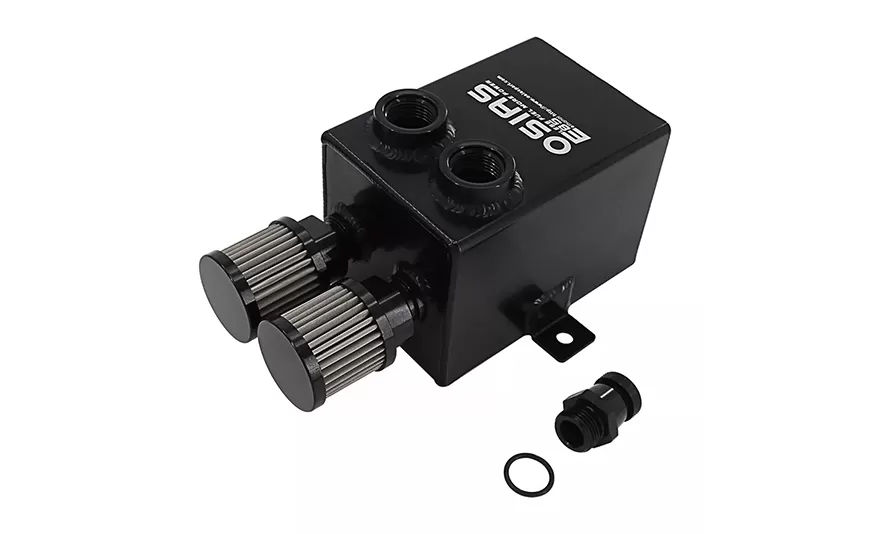
The application of Oil Catch Can in automobiles is mainly concentrated in the engine system, especially in turbocharged and direct injection engines. Its main function is to separate lubricating oil mist and water from the crankcase ventilation gas to prevent these substances from entering the intake system and affecting the performance of the engine. This article aims to explore the function, installation method and potential impact of Oil Catch Can on automobile performance.
一.What is Oil Catch Can ?
The Oil Catch Can is a small container used to collect oil vapor and carbon deposits discharged from the crankcase ventilation system (PCV system). During the operation of the internal combustion engine, due to the incomplete sealing of the piston ring, some combustion products will enter the crankcase to form the so-called "blow-by gas". These blow-by gases contain unburned fuel, water vapor and oil vapor. The original intention of the PCV system was to re-introduce these gases into the intake system to avoid direct discharge into the atmosphere to cause pollution.
However, this process will cause oil vapor to re-enter the combustion chamber, which not only wastes precious oil resources, but also may form carbon deposits in the intake system, affecting engine performance. Therefore, installing Oil Catch Can has become an effective means to reduce these problems.
二、Benefits of installing Oil Catch Can
1. Reduce carbon deposits
By capturing oil vapor, Oil Catch Can can significantly reduce carbon deposits on the intake manifold and intake valves, keeping the engine clean inside.
2. Improve fuel economy
Reducing oil consumption can indirectly improve fuel efficiency because oil vapor will not mix with fresh air, resulting in unnecessary combustion losses.
3. Protect turbocharger
For turbocharged engines, Oil Catch Can can prevent oil vapor from contaminating the blades of the turbocharger and extend its service life.
4. Meet environmental protection requirements
By reducing the emission of harmful substances, Oil Catch Can also make a certain contribution to environmental protection.
5. Prevent oil loss
Oil Catch Can can effectively prevent lubricating oil from being lost through the crankcase ventilation system, reduce oil consumption, and reduce maintenance costs. By separating lubricating oil mist, impurities in the oil can be reduced, the cleanliness of the oil can be maintained, and the service life of the oil can be extended.
三、How to install Oil Catch Can
Installing Oil Catch Can is usually a relatively simple process, but the specific steps may vary depending on the model. Here are the basic installation guidelines:
1. Prepare tools and materials: Make sure you have the right tools (such as wrenches, scissors, etc.) and materials (such as hoses, clamps, etc.).
2. Position the Oil Catch Can: Choose a location that is easy to install and does not affect other components.
3. Disconnect the original PCV pipe: Carefully remove the original pipe connecting the crankcase and the intake system.
4. Connect the Oil Catch Can: Connect the Oil Catch Can to the disconnected ends through the hose, making sure the connection is tight and leak-free.
5. Test and check: Start the engine, check for leaks, and confirm that the Oil Catch Can is working properly.
Conclusion
The Oil Catch Can has many positive effects on the performance of the car, including improving fuel economy, extending engine life, reducing emission pollution, improving engine responsiveness, and preventing oil loss. Therefore, installing and maintaining the Oil Catch Can well is very important to maintain the good performance and extend the service life of the car.












Write a comment